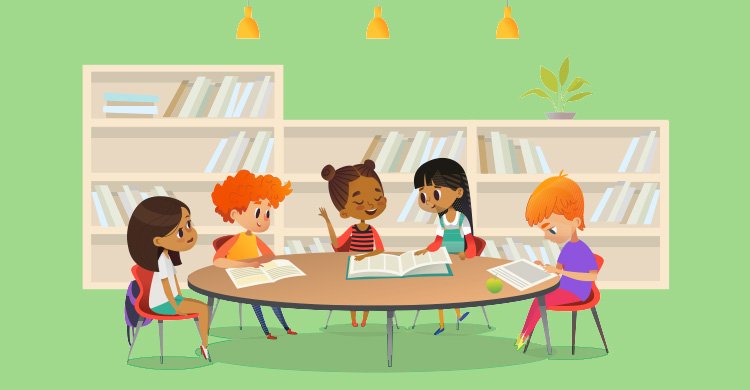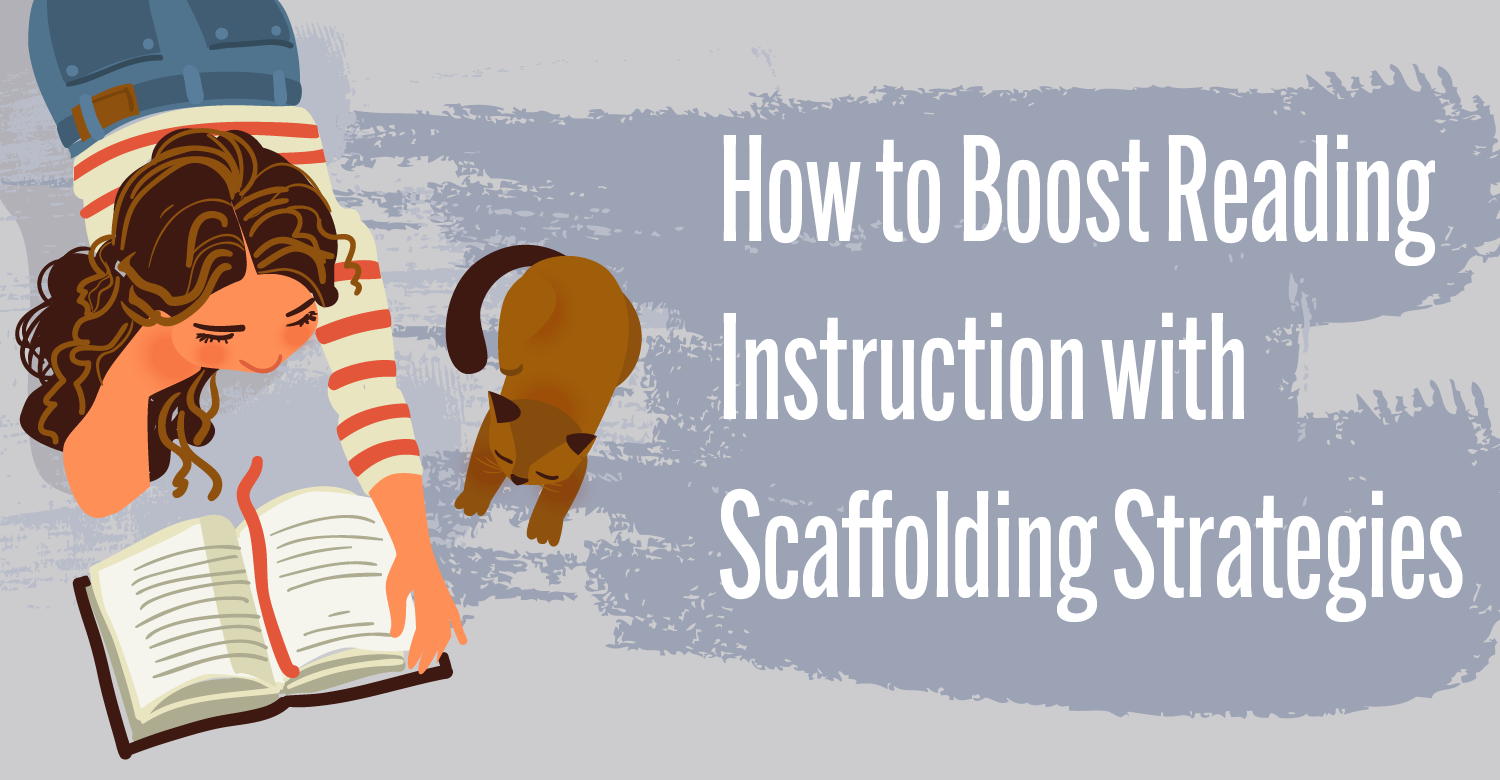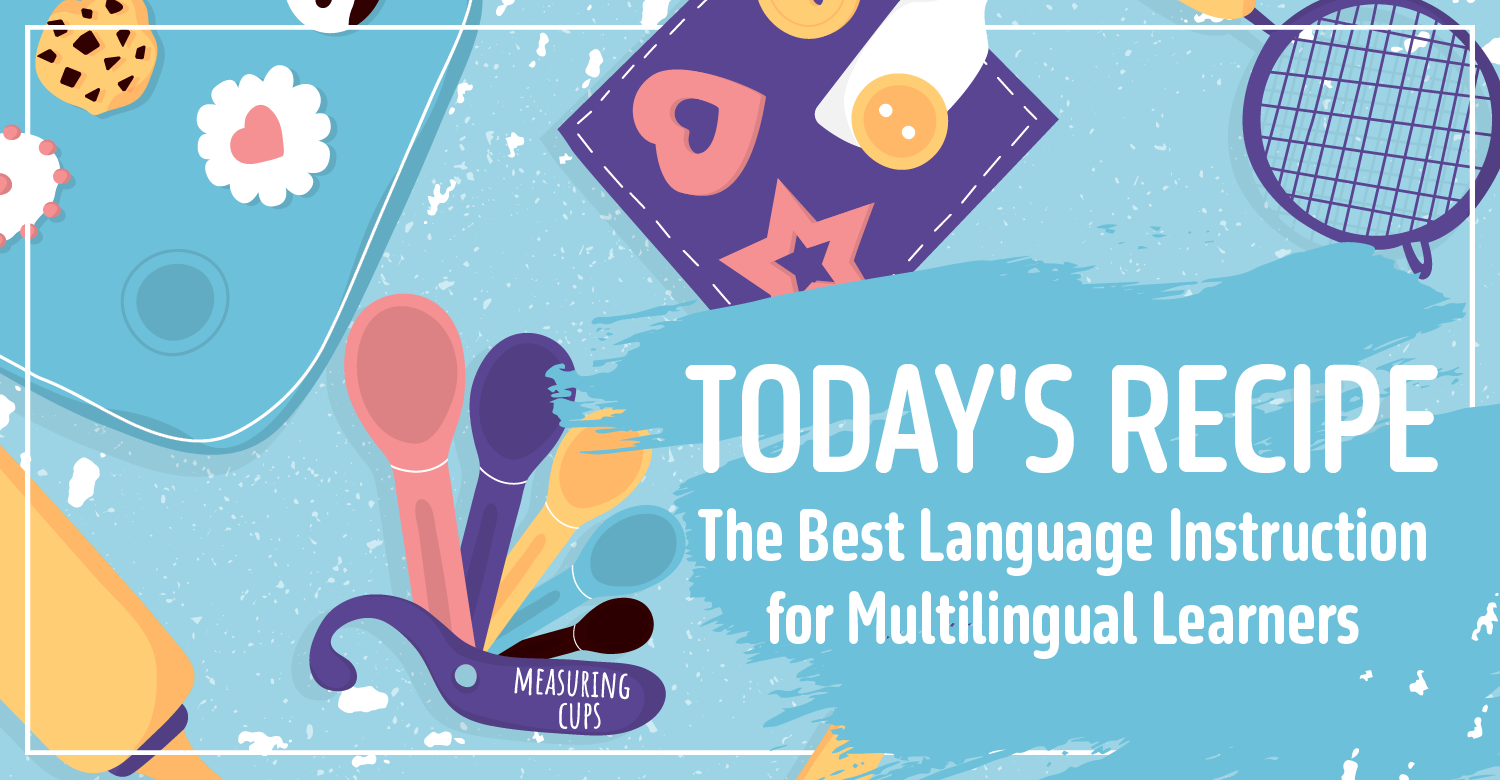This is the seventh post in a series on student-led, small-group discussions. To read the other posts, see “Small Groups, Big Discussions.” The series explores the challenges to effective small-group discussions and how to address them.
In Part 6 of this blog series, Setting the Stage for Student-Led Discussions, I shared that student-led discussions are most successful when consistent structures are in place and clear expectations for discussions are articulated and modeled by the teacher. Now that your classroom environment is set up for student talk, you may be wondering about grouping strategies and skills students need to be effective group members.
“Is it better to have students work in pairs for the first part of the school year before I place them in small groups?” “What should I consider doing at the beginning of the year to establish effective group membership and communication skills as students talk together?” These are some of the questions teachers ask as they begin to add more student-led discussion opportunities in their instructional practices.
When designing instruction and preparing for student-led discussions, it is critical that we don’t assume students already know how to do what we are asking. We must explicitly teach students how to communicate, be effective group members, take good notes about talk-worthy information, transition between tasks, and other procedures that will assist in creating a positive environment for rich discussions to take place (Novak, S., & Slattery, C., 2016).
Partners Versus Small Groups
Students need many opportunities to work with partners, triads, and in small groups of four to six members throughout the year. A common misstep is to think by offering opportunities to use the most used discussion format, turn and talk, students will naturally transition into having robust conversations when placed in small groups. Since the protocols and structures are different for these two discussion methods, students should be explicitly taught how to use both and we need to build their stamina through consistent opportunities to practice.
Turn and talk is a discussion method used with a partner to generate short, quick conversations. Whereas, small group discussions should be designated when different perspectives about complex topics are needed. While quick conversations engage and excite students, the longer, small group discussions offer a structure for the application and synthesis of learning.
Another common misstep we make is to give students opportunities to talk only with partners at the beginning of the school year, reserving small group discussions for later in the year. The assumption is that students will be able to build stamina for longer conversations better with a partner. Talking with four or five other students requires different skills than conversing with partners. With partners, sharing speaking time is much easier than it is when multiple voices need to be heard. Although effective communication skills are required when speaking with any number of other people, it takes more understanding and finesse to persuade and summarize multiple perspectives within a small group. These skills don’t readily transfer from discussions with partners to small groups; therefore, students need frequent opportunities early in the school year to talk within a variety of grouping structures.
Discussion Skills
For an effective discussion to occur at the beginning of the year, our students must come to the group prepared having read and made talk-worthy notes about the topic or text, developed questions for the group and when appropriate, accessed other texts about the same topic. It is helpful to provide students with a structure or format for note-taking and gathering textual evidence while reading. Reviewing these notetaking skills at the beginning of the year is crucial for good conversations. With practice, our students will independently make notes in the margins of text, write questions and summarize key information into their response notebooks or on sticky notes while reading. These notes will provide the content for their discussions.
While content is important to discussion, students have more difficulty knowing how to share their thoughts, ideas, disagreements, and affirmations. The communication volley typically begins when a student shares an opinion or idea. Others respond with statements like “I agree,” “I disagree,” or “I think,” and then a new topic is introduced. Depth and rigor is lacking. It takes explicit instruction to move students beyond just surface level, short talking sessions to truly develop their communication skills. We’ll know what students need by observing while they engage in conversation, taking notes and looking for common patterns across groups.
An example of a fifth-grade lesson and follow-up best illustrates this point.
Lisa Swanson, a fifth-grade teacher, wanted her students to engage in a small-group discussion on the sixth day of school. First, she had them read a short poem. Then she asked them to jot a note and explained that the note could be a question, connection, visualization, summary, or an inference that stimulates their thinking about the poem. She motivated them by sharing that they would use this note as they talk with three other people.
As students wrote on their sticky notes, Lisa moved among them looking at their work in progress. Sometimes, she stopped to ask questions or offer suggestions to stretch their thinking. After a few minutes, she called the class together and shared some examples of the type of responses she observed.
After observing that students had taken talk-worthy notes, she explained some qualities of good conversations by showing them a rubric that identified three categories:
- Preparation
- Their contribution
- Balance
Then she released them to engage in a discussion using their notes.
Students gathered in groups of four to engage in their first small-group discussion of the school year. As students talked in groups, Lisa moved among them assessing their skills to determine her area of focus for the following day’s lesson and discussion. While observing, she noted a pattern among groups. Students read the information on their sticky note but rarely expounded on the thought before the next person read the information on the next note. No questions were asked, nor was a true discussion taking place among the groups. She also noted a pattern of strength in the quality of their notes. The notes were good, talk-worthy ideas! These observations helped determine her next instructional moves.
Next Instructional Steps
The next day, Lisa prepared an activity that would demonstrate her observation of a pattern that required follow-up instruction. She wanted to show not tell students that their conversations were like popcorn popping in a popper. First, she distributed a piece of paper with a number and a sentence to four students. Then, she told the class to listen to the conversation to determine what they might do to improve the discussion. After the students read the four very different, unrelated sentences, she asked students if it was a good discussion.
When the students could tell her that they jumped from one topic to the next, she shared some talk prompts that might help to elaborate on a topic. Examples included:
- Tell me more.
- How does this connect to the topic?
- Can you explain your thinking?
She offered an example by asking four students to come to the front of the room for a fishbowl conversation. Given a discussion prompt, the four students practiced using the talk prompts to elaborate on the topic. At times, Lisa had to offer support by giving them a hint. While other students watched, the group of four talked for about one or two minutes about one simple topic.
Lisa didn’t want to change the structure of content delivery from the previous day since she was teaching a new process. Therefore, she offered a new, short poem and had the students write one talk-worthy thought on a sticky note. Then, students broke out in the same groups formed the previous day and began their discussions. As Lisa moved among groups, she noted that students elaborated on the topic more by using the talk prompts on the board as well as others.
With Lisa’s specific feedback, the students understood the difference between a “popcorn” discussion and a conversation with elaboration. For these two lessons, students learned to take talk-worthy notes and elaborate on topics by asking questions and making connections. While most relied on using talk prompts posted on the board to practice this new technique, it was evident that some students asked other questions and made comments connecting unique ideas to their topic. Students need many focus lessons to deepen their communication and group membership skills, yet they are off to a great start.
View Lisa’s second-day lesson along with her students’ discussion below.
Watch for next month’s blog where I explore scheduling discussions: How often should small group discussions take place? When during the unit of study should students engage in student-led discussions? How much time should I allocate for each discussion?
References:
Novak, & Slattery. (2016). Deep discourse: A framework for cultivating student-led discussions. Bloomington, IN: Solution Tree.
Sandi Novak, an education consultant, has served as an assistant superintendent, principal, curriculum & professional development director, and teacher. She has authored three books: Deep Discourse: A Framework for Cultivating Student-Led Discussions (Solution Tree, 2016), Literacy Unleashed (ASCD, 2016), and Student-Led Discussions (ASCD, 2014). She also authored the On-line ASCD PD Course, Building a Schoolwide Independent Reading Culture, as well as journal articles and blogs. Visit Sandi’s website, join her professional LinkedIn community, or send her a tweet @snovak91335.
[author_bio id=”1117″]







